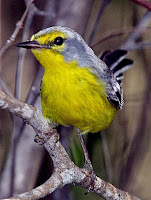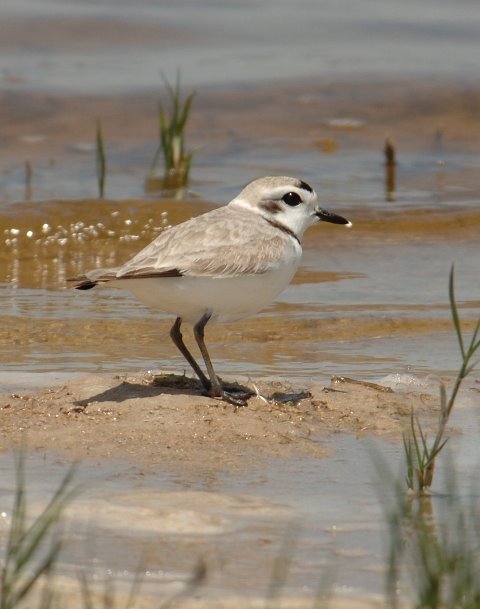,+Barbuda,+13+Jul++09+(web).jpg) I have just returned after spending a week in Antigua and Barbuda, attending the Society for the Study and Conservation of Caribbean Birds conference. I had been invited to give the keynote address, and simply could not say no to another opportunity to meet with the various bird conservation interests in the Caribbean. I had last met with the group in Tobago in 2004, and I wanted to reacquaint myself with old friends and the important work they are engaged in across the Caribbean islands.
I have just returned after spending a week in Antigua and Barbuda, attending the Society for the Study and Conservation of Caribbean Birds conference. I had been invited to give the keynote address, and simply could not say no to another opportunity to meet with the various bird conservation interests in the Caribbean. I had last met with the group in Tobago in 2004, and I wanted to reacquaint myself with old friends and the important work they are engaged in across the Caribbean islands.Before the conference, though, a number of us took the short flight across to Barbuda. Antigua has a population of around 70,000, and has a well-developed tourism industry (more on that later on the Fermata blog). Barbuda, however, has a small population of around 1500, and a fascinating communal society. Barbuda remains, thankfully, largely undeveloped.
The history of these islands simply repeats a pattern of colonization characteristic of the region (of much of the world, in truth). According to the U.S. State Department,
Christopher Columbus landed on the islands in 1493, naming the larger one "Santa Maria de la Antigua." The English colonized the islands in 1632. Sir Christopher Codrington established the first large sugar estate in Antigua in 1674, and leased Barbuda to raise provisions for his plantations. Barbuda's only town is named after him. Codrington and others brought slaves from Africa's west coast to work the plantations.Antiguan slaves were emancipated in 1834, but remained economically dependent on the plantation owners. Economic opportunities for the new freedmen were limited by a lack of surplus farming land, no access to credit, and an economy built on agriculture rather than manufacturing. Poor labor conditions persisted until 1939, which saw the birth of the trade union movement in Antigua and Barbuda.
The name Codrington reappears in the lagoon which takes up much of the west of the island. The lagoon is shallow and is bordered by extensive mangrove forests. The most extensive Magnficant Frigatebird breeding colony in the world is located on Man of War Island, situated north of Codrington (the main settlement on the island) bordering the lagoon.
.jpg)
During our trip we visited the frigatebird colony. The males had yet to return to nest, and most of the remaining birds were juveniles and females. Yet by boat we were able to see hundreds of these spectacular birds, many within arm's reach. There were Brown Boobies roosting within the colony as well, and we heard and saw several of the local breeding Yellow Warblers (these of the "golden" warbler or Petechia group).
.
Speaking of warblers, the next part of our trip focused on the endemic Barbuda Warbler (Dendroica subita). In 2000 the American Ornithologist’s Union (AOU) ’split’ D. a. adelaidae into three monotyoic taxa under the names Adelaide’s Warbler D. adelaidae (endemic to Puerto Rico and Vieques), Barbuda Warbler D. subita (endemic to Antigua and Barbuda), and St Lucia Warbler D. delicata (endemic to St. Lucia). This warbler is found in the thorn-scrub on the western third of the island. During our time there we had no difficulty finding the bird, and by trip's end we had seen easily a dozen. Additional birds of interest found in the Barbuda forests were Lesser Antillean Flycatcher, numerous Caribbean Elaenias and Black-whiskered Vireos, and Gray Kingbirds at virtually every stop.
.jpg) I find these isolated populations of parulids to be among the most fascinating birds. Most of us are exposed to the genus Dendroica through the wood warblers that breed and migrate through the Americas. Many of these birds are long-distance migrants, and only stop briefly in my yard in Galveston to feed and rest before continuing either to the tropics or back to their breeding grounds in the northern forests.
I find these isolated populations of parulids to be among the most fascinating birds. Most of us are exposed to the genus Dendroica through the wood warblers that breed and migrate through the Americas. Many of these birds are long-distance migrants, and only stop briefly in my yard in Galveston to feed and rest before continuing either to the tropics or back to their breeding grounds in the northern forests.But here, on Barbuda, there is an isolated, non-migratory species of the same genus that exists no where else in the world. Birdlife International estimates a total population of 1500-2000 on Barbuda. With sea level rise associated with global climate change, it is not hard to see how such an isolated species is a grave risk. Barbuda, unlike Antigua (with Boggy Peak, soon to be Mount Obama, over 1300 feet high), the highest point on Barbuda is only 100 feet.
The other (and most immediate) threat to both islands (in fact to the Caribbean as a whole) is unsustainable tourism. Resorts and cruise ship terminals continue to spread through the region, although Barbuda still remains largely undeveloped. I can only hope that Antigua and Barbuda, after the latest financial fiasco, will consider a more sustainable form of economic development, one that respects the environment and is inclusive of the local residents.
Thanks to Mike Pienkowski, who accompanied us on the field trip, for allowing me to use a couple of his photos of the Barbuda Warbler. These were taken during our field trip.
Ted Eubanks
21 July 2009
+(web).jpg)









0 comments:
Post a Comment